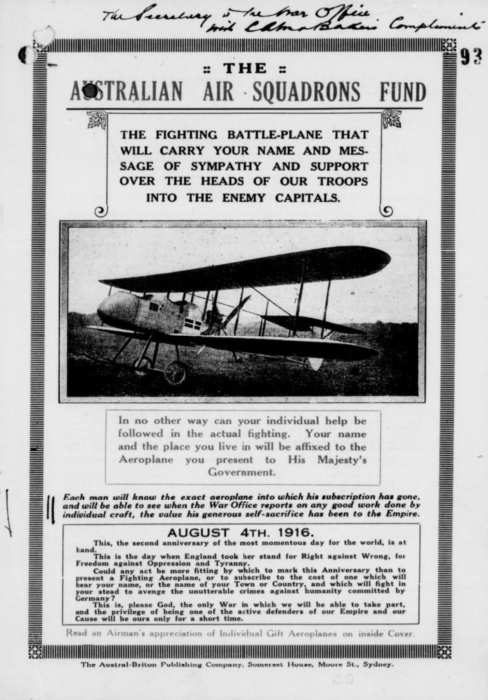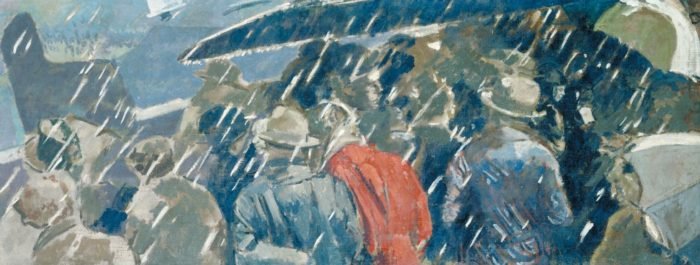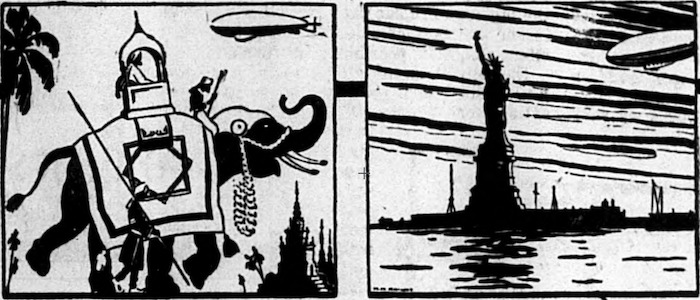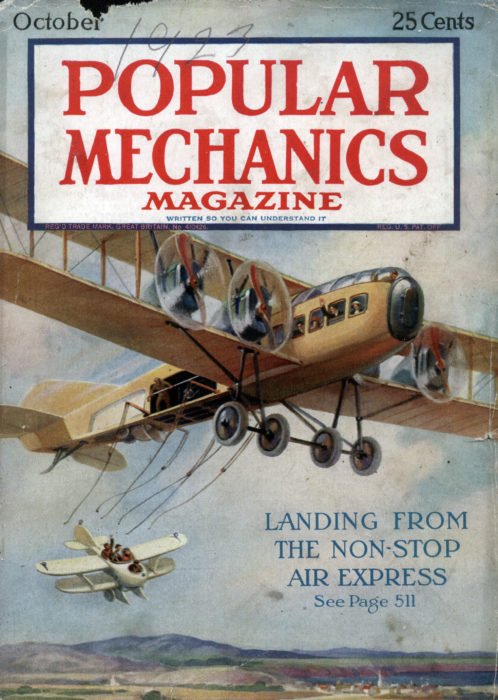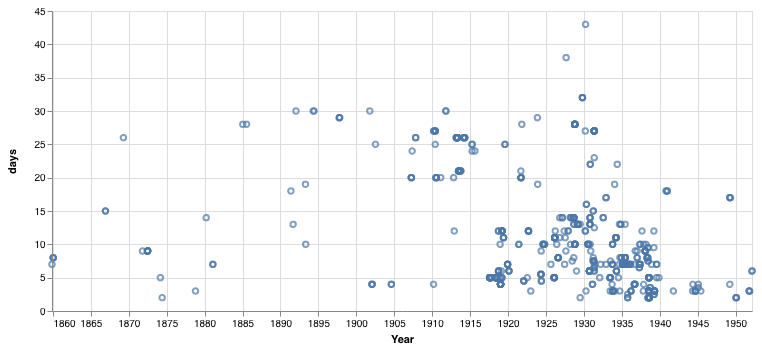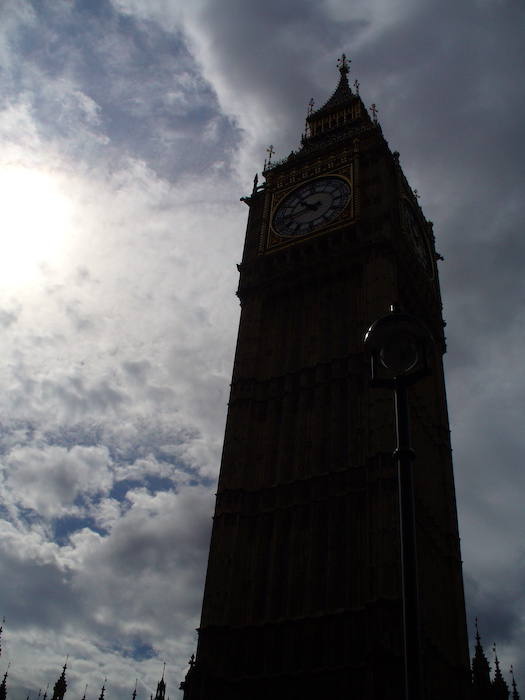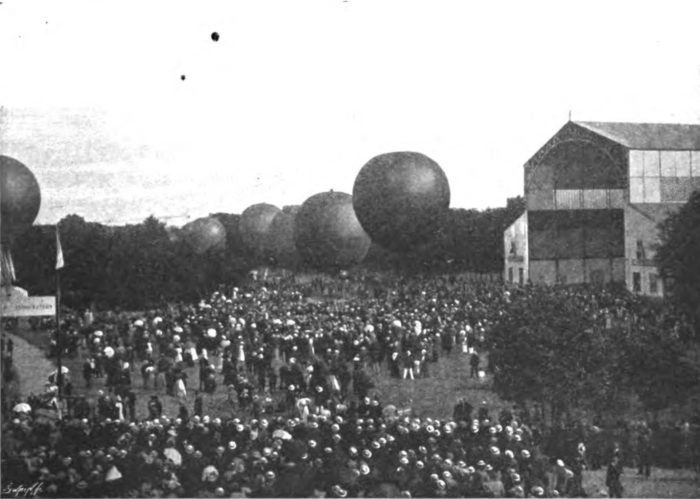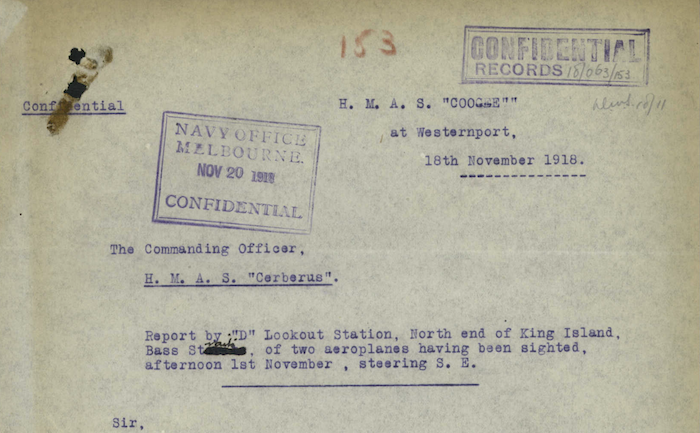AIR in the AJCP
This is the cover of a leaflet produced in 1916 by the Australian Air Squadrons Fund, the Australian arm of the Imperial Air Flotilla which raised funds around the British Empire for presentation ‘battle-planes’ for the Royal Flying Corps. My interest in it is not so much for its own sake, though I am struck […]


